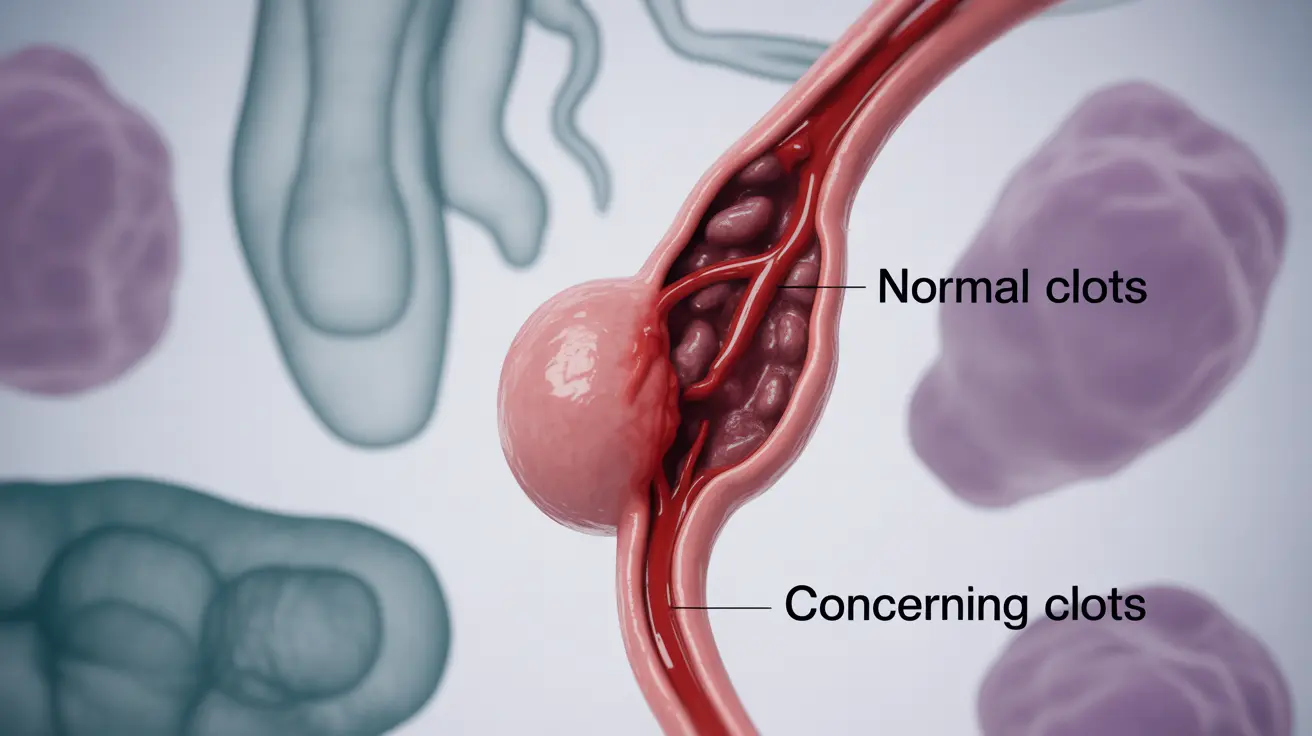The postpartum period brings significant changes to a woman's body, and understanding what's normal versus concerning is crucial for new mothers. One common concern after childbirth is blood clots, which can range from normal healing processes to potentially serious complications. Knowing when to worry about postpartum blood clots can help ensure timely medical intervention when necessary.
This comprehensive guide will help you understand the difference between normal postpartum bleeding and warning signs that require immediate medical attention. We'll explore what to expect, when to be concerned, and how to recognize serious complications.
Normal Postpartum Bleeding vs. Concerning Blood Clots
During the first few days after delivery, passing some blood clots is completely normal. This process, known as lochia, is your body's natural way of healing and removing tissue from your uterus. However, understanding the typical progression of postpartum bleeding can help you identify potential problems.
Normal Characteristics of Postpartum Blood Clots
- Clots smaller than a golf ball
- Bright red to dark red color in the first few days
- Gradually decreasing size and frequency
- Blood flow that lessens over time
- Clots that mainly appear when changing positions or after resting
When Blood Clots Become Concerning
- Clots larger than a golf ball
- Heavy bleeding that soaks through a pad within an hour
- Bright red bleeding that continues beyond the first week
- Persistent or increasing blood clot passage after the first week
- Foul-smelling discharge accompanying clots
Understanding the Timeline of Postpartum Bleeding
Postpartum bleeding typically follows a predictable pattern. The first 24-48 hours usually involve the heaviest bleeding with occasional clots. By week two, the bleeding should significantly decrease, changing from bright red to pink or brown. Most women experience some level of bleeding for 4-6 weeks postpartum, though it should continuously decrease in volume and frequency.
Serious Complications to Watch For
Deep Vein Thrombosis (DVT) Symptoms
- Leg pain or tenderness, usually in one leg
- Swelling in one leg
- Warm skin in the affected area
- Redness or discoloration of the skin
Pulmonary Embolism Warning Signs
- Sudden shortness of breath
- Chest pain or discomfort
- Rapid heartbeat
- Coughing up blood
- Feeling faint or dizzy
When to Seek Immediate Medical Care
Don't hesitate to contact your healthcare provider immediately if you experience any of these warning signs:
- Severe abdominal pain
- Heavy bleeding that soaks through a pad per hour
- Multiple large blood clots
- Fever over 100.4°F (38°C)
- Symptoms of DVT or pulmonary embolism
- Foul-smelling vaginal discharge
Frequently Asked Questions
When is postpartum blood clotting after childbirth a cause for concern?
Postpartum blood clotting becomes concerning when you pass clots larger than a golf ball, experience heavy bleeding that soaks through a pad within an hour, or notice bright red bleeding continuing beyond the first week after delivery.
What symptoms indicate I should seek immediate medical help for postpartum blood clots?
Seek immediate medical help if you experience severe pain, heavy bleeding with large clots, fever, shortness of breath, chest pain, or significant swelling in one leg. These could indicate serious complications requiring prompt medical attention.
How long after delivery is it normal to pass blood clots, and when should bleeding decrease?
It's normal to pass small blood clots during the first few days after delivery. Bleeding should gradually decrease, changing from bright red to brown or pink within 2 weeks. Total bleeding duration typically lasts 4-6 weeks postpartum.
What are the signs of serious complications like deep vein thrombosis or pulmonary embolism after childbirth?
Signs of DVT include one-sided leg pain, swelling, warmth, and skin discoloration. Pulmonary embolism symptoms include sudden shortness of breath, chest pain, rapid heartbeat, and coughing up blood.
How can I tell the difference between normal postpartum bleeding and postpartum hemorrhage requiring treatment?
Normal postpartum bleeding gradually decreases over time with occasional small clots. Postpartum hemorrhage involves heavy bleeding that soaks through a pad within an hour, multiple large clots, and may be accompanied by dizziness, rapid heartbeat, or severe pain.




